Archive for November, 2012
How cool is Stinky?
30 November 2012 | This 'n' that
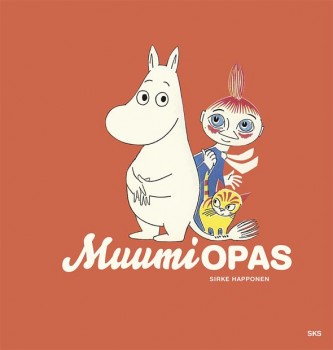
Moomintroll and Mymble: positive role models
‘What reigns in Moomin Valley is a rock-hard hierarchy of those who are cool (Snufkin, Moominmamma, Little My), those who need to be those who are cool (Moomintroll, the Snork Maiden, Sniff, one or two Whompers and Toffles), and those who are absurd (the Hemulen, the Fillyjonk, the Muskrat)’, noted Pia Ingström in her review (Books from Finland 2/2008) of Sirke Happonen’s dissertation on Tove Jansson’s characters.
Snufkin? Fillyjonk? The Moomin world, created by the versatile Finland-Swedish writer and artist Tove Jansson (1914–2001), is peopled with funny-shaped Moomins and a great variety of other creatures who may look a bit odd at first but who are very… human. Jansson’s books have been translated into more than 40 languages. More…
Robert Åsbacka: Samlaren [The collector]
30 November 2012 | Mini reviews, Reviews
 Samlaren
Samlaren
[The collector]
Helsingfors: Schildts & Söderströms, 2012. 191 p.
ISBN 978-951-52 3001-0
€22.50, hardback
Violence and darkness have always played an important role in the novels Robert Åsbacka (born 1961) writes, but up until now they have been accompanied by mitigating factors, tenderness, and warmer tones. His new novel is a dark story which goes deeper into the wound than any of the earlier novels. Tom, lonely boy and fatherless victim of bullying in a children’s world where adults neither see nor help, gets to know the young couple next door, Bo and Viola. Bo is friendly, Viola is nice and beautiful, and their life seems, for a while, to be the picture of a better future for a boy to grow up to, a life with a car, girlfriend, breathing room. But Åsbacka mercilessly reveals the grim truth about Bo and Viola; violence exists in the adult world too. In all its horror, Samlaren is one of the autumn’s best novels; the only comfort comes in the form of Åsbacka’s style, and well balanced and meticulous depictions. Åsbacka is careful in his choice of depictions, and he knows how to make sure the image remains etched into the reader’s memory.
Translated by Claire Dickenson
Finlandia Prize for Fiction candidates 2012
23 November 2012 | In the news
The candidates for the Finlandia Prize for Fiction 2012 were announced on 15 November. They are Riikka Ala-Harja, Pirjo Hassinen, Heidi Köngäs, Ulla-Lena Lundberg, Aki Ollikainen and Juha Seppälä.
Their novels, respectively, are Maihinnousu (‘The landing’, Like), Popula (Otava), Dora, Dora (Otava), Is (‘Ice’, Schildts & Söderströms), Nälkävuosi (‘The year of hunger’, Siltala) and Mr. Smith (WSOY).
The jury – researcher Janna Kantola, teacher of Finnish Riitta Kulmanen and film producer Lasse Saarinen – made their choice out of ca. 130 novels. The winner, chosen by Tarja Halonen, who was President of Finland between 2000 and 2012, will be announced on 4 December. The prize, awarded since 1984, is worth 30,000 euros.
The jury’s chair, Janna Kantola, commented: ‘One of this year’s recurrent themes is the Lapland War [of 1944–1945]. Writers appear to be pondering the role of Germany in both the Second World War and in contemporary Europe. Social phenomena are examined using satire; the butt is the birth and activity of extremist political movements. Economics, the gutting of money and market forces, are present, as in previous years, but now increasingly with a sense of social responsibility.’
Popula deals with people involved in a contemporary populist political party. Dora, Dora describes Albert Speer’s journey to Finnish Lapland in 1943. Nälkävuosi depicts the year of hunger in Finland, 1868. Is takes place in the Finnish archipelago of the post-war years. Mr. Smith portrays greed and the destructive power of money both in Russian and Finnish history as well as in contemporary Finland. Maihinnousu, set in Normandy, depicts a child’s serious disease in a family that is going through divorce.
On life and death
23 November 2012 | In the news
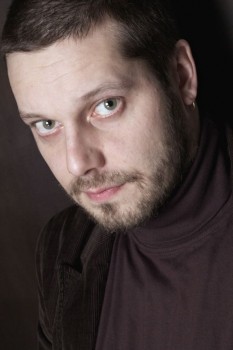
Aki Ollikainen. Photo: Laura Malmivaara
On 15 November Helsingin Sanomat Literature Prize, the Helsinki newspaper’s prize for the best first work of the year, worth €15,000, was awarded for the 18th time.
The winner was journalist Aki Ollikainen (born 1973) with his first novel Nälkävuosi (‘The hunger year’, Siltala). The jury made the choice from 80 first works.
The hard years of 1867 and 1868 almost a tenth of the Finnish population died of hunger and diseases. Nälkävuosi portrays poor people in the country who are forced to leave home and look for any food they can find, and well-to-do gentlemen in town who can afford to amuse themselves with women, for example. This slim novel speaks of life and death; finally, after a deadly winter there will be new hope for better times.
Aki Ollikainen: Nälkävuosi [The year of hunger]
23 November 2012 | Mini reviews, Reviews
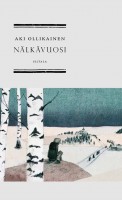 Nälkävuosi
Nälkävuosi
Helsinki: Siltala, 2012. 139 p.
ISBN 978-952-234-089-4
€32.90, hardback
Finland, winter 1867, famine. The historical framework of this first novel by Aki Ollikainen (born 1973) is barren and the twists of the plot, almost without exception, are dark. The novella weaves together two stories: the poor people of the countryside live hand to mouth, whereas city businessmen, the brothers Teo and Lars Renqvist, agonise about their love problems in their well-heated houses. Of a family of four that sets out from the countryside on a begging mission, only one lives to see the following spring and the melting of the snow. The beast in people leaps forth: when there is no longer anything left to lose, humanity, an unnecessary burden, is trampled into the mud. The whiteness of the endless winter becomes the colour of hunger and of death. Ollikainen’s brief and tragically beautiful novel – which won the Helsingin Sanomat Prize for first works in November – tells its cruel tale with a warmth that is not in conflict with the events it describes. When the roads of city gents and country people entwine, humanity wins, light dawns.
Translated by Hildi Hawkins
In one hundred springtimes
23 November 2012 | Extracts, Non-fiction
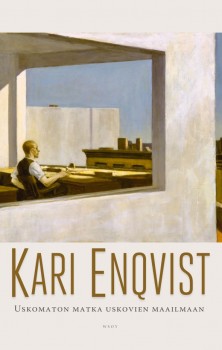 Extracts from Uskomaton matka uskovien maailmaan (‘An unbelievable journey into the world of the believers’, WSOY, 2012)
Extracts from Uskomaton matka uskovien maailmaan (‘An unbelievable journey into the world of the believers’, WSOY, 2012)
In his new book the writer, professor of cosmology, a scientist without a religion Kari Enqvist explores religiosity, how it manifests itself in present-day Finland, in various churches and parishes. How will the expanding scope of science and secularisation change the world and the forms of spirituality in the course of the next century?
When, in July 1969, Neil Armstrong climbed down the ladder on to the surface of the Moon, it was a huge propaganda coup for both the United States and the scientific world view. Manned space flights as a way of gaining knowledge are both ineffective and brain-numbingly expensive, but it is hard to imagine a stronger individual and universally understandable demonstration of the superiority of the scientific world view than an astronaut on the surface of a foreign celestial body. Everyone can recognise it as a triumph of both engineering technology and the hard sciences.
But the astronaut solution has been tested already, and I do not believe that space travel will expand our consciousnesses in the next century. It is possible that we will not even have visited Mars. Fantasies about manned flights to other stars are, in my opinion, utopian in the extreme and I do not really believe that humans as physical beings will ever leave the solar system. Journeys to the stars are inconceivably long and so expensive that they cannot be embarked on merely in order to fulfil the Buck Rogers fantasies of teenage boys. Carrying humans to the closest one, alpha Centauri, a mere four light years away, would take, at best, hundreds of years (we can dismiss rockets that travel at the speed of light as mere scientific fantasy). Even if deep-freezing to slow vital functions were possible, it would make as much sense to pay hundreds of billions to freight pig carcasses to the planets. For everything that human beings can do can be done better – and, more importantly, more cheaply – by machines. Even if the spirit were willing, the flesh is so weak that silicone beats it hollow.
So it is my guess that in place of the macrocosmos the scientific world view will seek consolidation in the microcosmos. As a cosmologist, I am not happy to admit this, but admit it I must. More…
Literary glory and basketball
23 November 2012 | This 'n' that
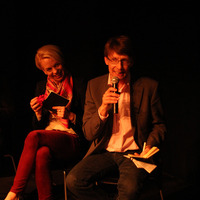
Fights with words: Baba Lybeck and Markus Nummi. Photo: Literary Death Match
Fans of new writing and competitive reading out loud converged on Korjaamo in Helsinki on October 25th for the second Finnish ‘episode’ of Literary Death Match. LDM (as it’s known to regulars) is a series of events created in the USA and hosted by Adrian Todd Zuniga in which authors perform live readings of their recent work and receive critical assessments from a panel of judges in a manner familiar to viewers of trashy TV talent shows.
The winners of the evening’s initial reading rounds advance to the final, where the ultimate victor is decided in a game show-style battle involving skills that are perhaps more tangential to the work of most authors.
In his shiny jacket, LDM co-founder Adrian Todd Zuniga certainly looked the part of the cheesy game show host. He was an enthusiastic compère and got the bilingual evening under way by introducing the panel of judges. Author Markus Nummi was to be responsible for assessing the competitors on literary merit, while Baba Lybeck, a radio journalist and host of Uutisvuoto (the Finnish TV version of the BBC’s topical panel show Have I Got News for You), would be awarding points for performance. The third member of the panel was journalist and author Ari Lahdenmäki, who was assigned the category of ‘Intangibles’, i.e. anything that didn’t fall under the other two headings. More…
Olli Rehn: Myrskyn silmässä [In the eye of the storm]
23 November 2012 | Mini reviews, Reviews
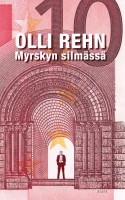 Myrskyn silmässä
Myrskyn silmässä
[In the eye of the storm]
Helsinki: Otava, 2012. 320 p.
ISBN 978-951-1-26250-3
€ 30.50, hardback
Finland’s Olli Rehn currently serves as European Commissioner for Economic and Monetary Affairs and vice-president of the European Commission. He had previously occupied the post of Commissioner for European Union Enlargement. During the long economic crisis that began in Greece is increasingly affecting the whole of Europe, he has been ‘in the eye of the storm’, looking for ways to overcome the difficulties of member states. In this recent ‘interim report’ aimed at the general public, Rehn describes his personal experiences against the background of the crisis during its troubled and at times extremely hectic moments, and also presents recipes for overcoming it, taking into account both the Finnish point of view as well as broader global connections. He sees the success of the EU as being dependent on the creation of a banking union, the strengthening of European economic and monetary co-operation and the reinforcement of the green economy. The book opens up a fascinating perspective on the core of the wielding of power within the EU. Rehn writes fluently – but as an official, without revealing all that has taken place behind the scenes.
Translated by DavidMcDuff
Renaissance man
19 November 2012 | This 'n' that
 The graphic designer Professor Erik Bruun has been awarded the Helsinki Design Award, created to celebrate World Design Capital Helsinki 2012.
The graphic designer Professor Erik Bruun has been awarded the Helsinki Design Award, created to celebrate World Design Capital Helsinki 2012.
Worth 10,000 euros, this special one-off award is intended to highlight the remarkable work of Erik Bruun (born 1926). His internationally recognised life’s work – from the 1950s onwards – includes commercial posters, book and journal design, logotypes, postage stamps and bank notes, photography and nature posters. Recently his best designs of the 1950s have been experiencing a renaissance as, for example, printed material and posters.
Finnish nature, its flora and fauna, in particular endangered species, have been close to his heart, and his Saimaa ringed seal poster became the emblem of the Finnish Association for Nature Conservation.
Erik worked with us at Books from Finland as Art Editor from 1976 to 1990. He has lived for decades in an old wooden house on the UNESCO World Heritage Site islands of Suomenlinna (Sveaborg) in Helsinki harbour, and his observations of his winged friends, various sea birds, were often the subject of discussion over Books from Finland layouts.
The logo he created for Books in 1978, a quill with an eagle’s eye, featured on the covers of almost 50 issues of the journal; the illustration here, with the text Images from Finland, is from a catalogue introducing graphics and poems from a portfolio published by Eurographica in 1978.
Our editorial process went digital in the early 1990s – but Erik still works with his quills and pens, not with computers.
Congratulations!
In defence of small people
15 November 2012 | Non-fiction, Reviews
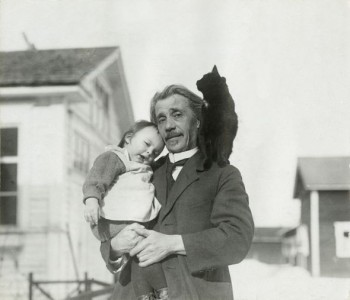
Teuvo Pakkala with grandson Teuvo-Pentti and Mirri the cat. Photo: F. Suomela / Otava, 1922
The best-known work of author Teuvo Pakkala (1862–1925) is Tukkijoella (‘On the log river’, 1899), Finland’s most-performed play. The song-studded comedy set in motion a phase of ‘logger romanticism’ in Finnish literature which later spread to film as well. Like the cowboy of the old west, the wandering lumberjack became the prototype for the Finnish masculine adventurer.
The entertaining musical play was a blockbuster. Pakkala’s works of more literary significance, however, encountered more difficulty. His short story collections on the lives of children – Lapsia (‘Children’, 1895) and Pikku ihmisiä (‘Little people’, 1913) – were greeted with flattering acclaim, but marked the author as hopelessly ‘effeminate’, as the critics put it. The stories were read as a kind of child-rearing guide, or even as tales for children. It wasn’t until much later, in the second half of the 20th century, that these psychological studies of children were re-examined as early gems of the short story form by a contemporary of Freud. More…
The mighty word
15 November 2012 | Fiction, Prose
‘Mahtisana’, a short story from the collection Lapsia (‘Children’, 1895). Introduction by Mervi Kantokorpi
Mother and Dad hadn’t said a single word to each other since lunchtime. The children, Maija and Iikka, were quiet, too. They sat apart, Iikka on the chair at the end of the sofa, where he could see the moon through the window, and Maija next to the window looking out on the street, where children moved about on skis and sleds. They didn’t dare make a sound, not even a whisper to ask for permission to go outside. It had been so quiet all that Sunday evening that when Mother spoke, encouraging them to go out and play, both of them nearly jumped.
They left without saying a word, Maija creeping quite silently. Even out in the courtyard she and Iikka still spoke in whispers as they decided which hill to go to. They didn’t really want to go anywhere, but when they came out to the street and could hear the happy shouts of children from every direction, it refreshed their spirits. Maija sat Iikka down on the sled and set off at a run, pulling him behind her. She felt as if her gloomy mood was falling away in pieces to be trampled underfoot.
A few streets down there was a large crowd of boys on the corner. They decided to go and see what was happening. More…
Kalevala maailmalla. Kalevalan käännösten kulttuurihistoria [The Kalevala in the world. A cultural history of Kalevala translations]
15 November 2012 | Mini reviews, Reviews
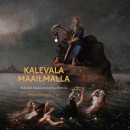 Kalevala maailmalla. Kalevalan käännösten kulttuurihistoria
Kalevala maailmalla. Kalevalan käännösten kulttuurihistoria
[The Kalevala in the world. A cultural history of Kalevala translations]
Toim. [Ed. by]: Petja Aarnipuu
Helsinki: Finnish Literature Society and Kalevala Society, 2012. 396 p., ill.
ISBN 978-952-222-372-2
€48, paperback
The Kalevala, based on the folk poetry collected by Elias Lönnrot, is Finland’s national epic. It first appeared in 1835, with a revised edition in 1849. The work has been published in more than 200 different versions in 60 languages, including prose translations, abridgements and adaptations. In this study, scholars and authors examine the Kalevala’s conquest of the world from many angles, ranging from Finland’s neighbouring regions, the epic traditions of Africa, the application of the epic to economic life, and the history of the work’s translation into the major languages of the world. The articles explore the linguistic, stylistic and cultural problems involved in translating the work and the experiences of some of the translators – for example, those who put the Kalevala into Iroquois. They also look at the motives behind the translations, and why in some languages there are several different versions. The book offers a varied and fascinating perspective on the epic’s cultural history.
Translated by David McDuff
Stories in stone
9 November 2012 | This 'n' that
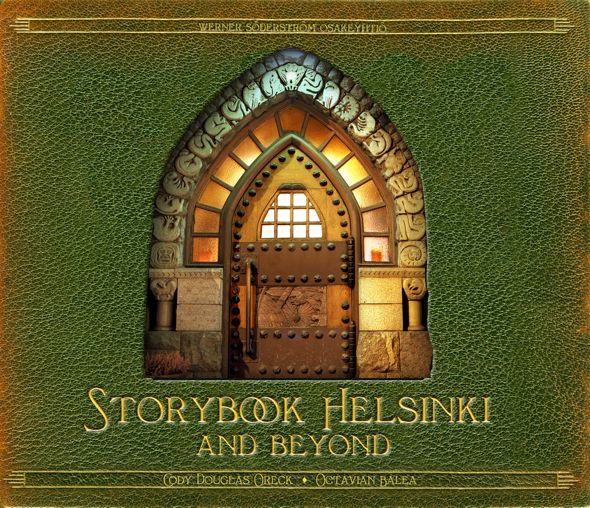 Birds and bees, frogs, squirrels, water lilies, thistles, ferns, junipers, bears and even gnomes originating in Finnish nature appear, in abundance, in Finnish architecture of the two decades around the turn of the 20th century.
Birds and bees, frogs, squirrels, water lilies, thistles, ferns, junipers, bears and even gnomes originating in Finnish nature appear, in abundance, in Finnish architecture of the two decades around the turn of the 20th century.
The trend that developed out of the Arts and Crafts Movement in Great Britain and in the United States, known as l’art nouveau in France and Jugendstil in Germany, lived a short but extremely fervent life in Finland, which adopted the term jugend.
In Finland this aesthetic movement is also called national romanticism. In 1899 the pan-Slavic movement arising in Russia took the form of attempts to suppress Finland’s burgeoning national identity in Finland, and in resisting this, artists made extensive use of national romantic material in their work. More…
See the big picture?
9 November 2012 | Extracts, Non-fiction
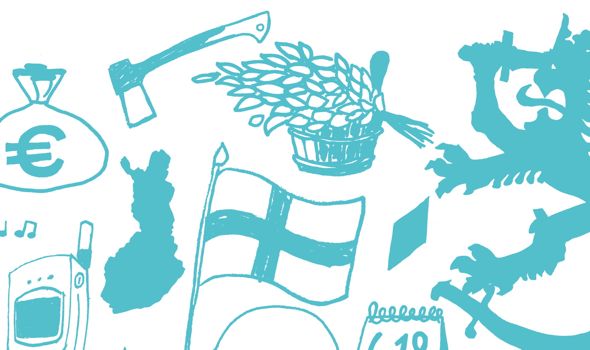
Details from the cover, graphic design: Työnalle / Taru Staudinger
In his new book Miksi Suomi on Suomi (‘Why Finland is Finland’, Teos, 2012) writer Tommi Uschanov asks whether there is really anything that makes Finland different from other countries. He discovers that the features that nations themselves think distinguish them from other nations are often the same ones that the other nations consider typical of themselves…. In Finland’s case, though, there does seem to be something that genuinely sets it apart: language. In these extracts Uschanov takes a look at the way Finns express themselves verbally – or don’t
Is there actually anything Finnish about Finland?
My own thoughts on this matter have been significantly influenced by the Norwegian social scientist Anders Johansen and his article ‘Soul for Sale’ (1994). In it, he examines the attempts associated with the Lillehammer Winter Olympics to create an ‘image of Norway’ fit for international consumption. Johansen concluded at the time, almost twenty years ago, that there really isn’t anything particularly Norwegian about contemporary Norwegian culture.
There are certainly many things that are characteristic of Norway, but the same things are as characteristic of prosperous contemporary western countries in general. ‘According to Johansen, ‘Norwegianness’ often connotes things that are marks not of Norwegianness but of modernity. ‘Typically Norwegian’ cultural elements originate outside Norway, from many different places. The kind of Norwegian culture which is not to be found anywhere else is confined to folk music, traditional foods and national costumes. And for ordinary Norwegians they are deadly boring, without any living link to everyday life. More…
Kaj Korkea-Aho: Gräset är mörkare på andra sidan [The grass is darker on the other side]
9 November 2012 | Mini reviews, Reviews
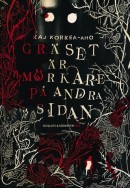 Gräset är mörkare på andra sidan
Gräset är mörkare på andra sidan
[The grass is darker on the other side]
Helsingfors: Schildts & Söderströms, 2012, 425 p.
ISBN 978-951-52-2999-1
€22.40, hardback
Finnish translation:
Tummempaa tuolla puolen
Helsinki: Teos & Schildts & Söderströms, 2012. 436 p.
Suomennos [Translated by]: Laura Beck
ISBN 978-951-851-482-7
€28.40, hardback
Benjamin’s life is turned upside down when he, in despair over his fiancée’s death, discovers things he perhaps didn’t want to know. A photograph taken by a speed camera minutes before the car crash shows that Sofie wasn’t alone in the car. A group of childhood friends reunite for Sofie’s funeral; dark secrets from the past which had until now lain hidden away and unexplained start to come out. What really happened when one of the villagers died in mysterious circumstances? Who murdered little Sidrid Ask? The enormous dark shadow filling people with chilling terror – is it Raamt, evil himself, walking amongst them again? Which should they be more scared of, the supernatural evil or the everyday and human that seems to be all around them? In his second novel the former television presenter and comedian Kaj Korkea-aho (born 1983) writes with great detail and a finely tuned ability to pitch his language. His novel is filled with fear, evil and supernatural phenomena, but at the same time with humour and warmth. The intrigue advances at an addictively fast pace. Korkea-aho takes his novel from biting parody, via horror to a beautiful yet serious depiction of the power of friendship.
Translated by Claire Dickenson
